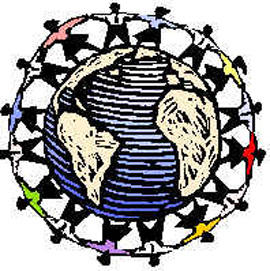
UCSB Hist 2c: World
History, 1700-pres.
The "Global Village" /
History Quotations
(Hist 2c Course homepage, Prof's
homepage)
created March 31, 2008, updated 3/31/08
 |
The "Global Village" / (Hist 2c Course homepage, Prof's
homepage) |
|
This handout is designed to be used in the first discussion section meeting of a large survey course in World History, 1700-present. The students will be asked to write down what they'd guess the distribution of population, languages, religions, etc. might be, and also to write down how they would define what history is. The TA would then collect answers on the board, writing down the range of answers present among the class. Ditto for a few definitions of history. Then the handout would be passed out to compare with their own notions of the Global Village in group discussion. If time remains, the definitions of history can be compared. As homework for next time, students would be asked to try to classify the 21 History Quotations into the three types of history that Nietzsche defines in his 1874 essay "On the Use and Abuse of History for Life" (which is in the course reader), namely antiquarian, critical and monumental. That would be the lead-in to the next week's discussion of that text and Thomas Kuhn's paradigm shift model of change. |
The Global Village
(.pdf version; .doc version)
[both formatted to print on two pages]
|
If we could shrink the earth's population to a village of 100 people, with all the existing human ratios remaining the same, it would look something like this (see note on sources, below):
[compare to the demographics of the 2006 2c course] |
|
For sources, see: http://odtmaps.com/behind_the_maps/population_map/state-of-village-stats.asp. |
|
What is History? -- Some Quotations
|